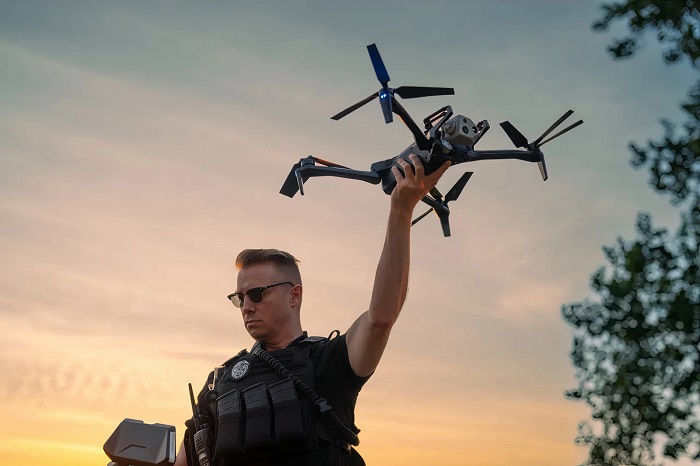Drones have become indispensable for AI border security forces, playing crucial roles in patrolling, land surveying, topography mapping, and search and rescue missions. The EU border agency Frontex has successfully deployed drones in Greece and Malta to monitor illegal migration, spending €144 million on new drones in 2023 to support wider deployments. The US Department of Homeland Security also invested over $1.8 million in drones for border patrolling last year.
Compact, cost-effective, and easily deployable, drones are now more sophisticated, equipped with pre-trained AI models for navigation, object detection, and land surveying.
Combining Drones and AI Border Security
Drones offer numerous advantages for AI border security patrols, including rapid coverage of wider areas, more effective maritime monitoring, and greater cost-efficiency compared to helicopter flights. The latest AI-powered drones support even more advanced security and surveying use cases.
Navigation in GPS-Denied Environments
Drones serve as effective deterrents against smuggling operations and illegal border crossings. However, they are vulnerable to signal jamming, with anti-drone devices available for purchase online, often without ID. Signal jamming is also a significant issue during military conflicts or security training in hostile environments.
US manufacturer Bavovna has developed an AI-powered navigation system for effective operation in GPS-denied environments. This system combines modular hardware and AI technology to deliver precise navigation amidst aggressive electronic warfare scenarios. By integrating ES capabilities with Sensor Fusion AI navigation, Bavovna ensures dependable drone operations under heavy signal interference, jamming, and meaconing. During recent field tests with a Radiobird Defender VTOL, Bavovna’s AI navigation system successfully piloted a 30 km (18 miles) route with an end-point positioning error of 0.42 – 0.63%.
Bavovna has also introduced an EW-resilient, low-SWAP signal intelligence (SIGINT) capture solution. This drone-mounted system can detect radio-emitted sources between 500MHz and 12GHz during fully autonomous flights, even in GPS-denied environments. This system enhances situational awareness for coastal guards, enabling the detection of unauthorized boat traffic.
Automated Patrolling and Intruder Detection
Modern border security drones are equipped with advanced computer vision systems and thermal cameras for superior detection of objects, vehicles, and humans, even in low-light conditions. Pre-trained computer vision algorithms accurately detect heat signatures, allowing faster response times from security forces.
For instance, the Skydio X10 drone can detect and auto-follow people, vehicles, and other objects, enabling border officers to focus their attention where needed. The Skydio NightSense algorithm improves navigation in low and no-light conditions. Onboard sensors paired with AI navigation algorithms support automatic obstacle detection and collision prevention, adjusting obstacle avoidance margins for narrow spaces.
Land Surveying and Mapping
AI-powered drones assist border forces in collecting geospatial data, mapping border terrain, and inspecting existing infrastructure at a fraction of the cost of chartered flights. Detailed scans help identify areas for reinforcement, close gaps, and ensure infrastructure is in good condition without requiring on-foot inspections.
The Anafi AI drone from Parrot offers survey-grade accuracy of 0.46cm/px GSD at 100ft (30m), thanks to a 48 MP 1/2” CMOS sensor. Developed for photogrammetry, Anafi AI includes AI-assisted flight modes for 3D asset scanning missions, continuously building and updating an occupancy grid for safer navigation and determining optimal flight trajectories to avoid obstacles.
Responsible Use of AI-Powered Drones in Border Operations
While drones can significantly enhance border security, their use raises privacy concerns. Misuse by law enforcement and operation outside authorized areas can lead to privacy violations. A 2020 NGO investigation found US border patrol drones flying miles away from the country’s borders, including 20 flights in Panama’s airspace in early 2020. These unauthorized detours risk breaching citizens’ privacy, with drones sometimes used to collect and share non-immigration-related data with law enforcement in border communities.
AI-enabled drones must be used responsibly within authorized areas and for approved use cases only. Border forces should maintain transparent records of the data collected, how it is stored, and its usage to protect citizens’ privacy rights.


